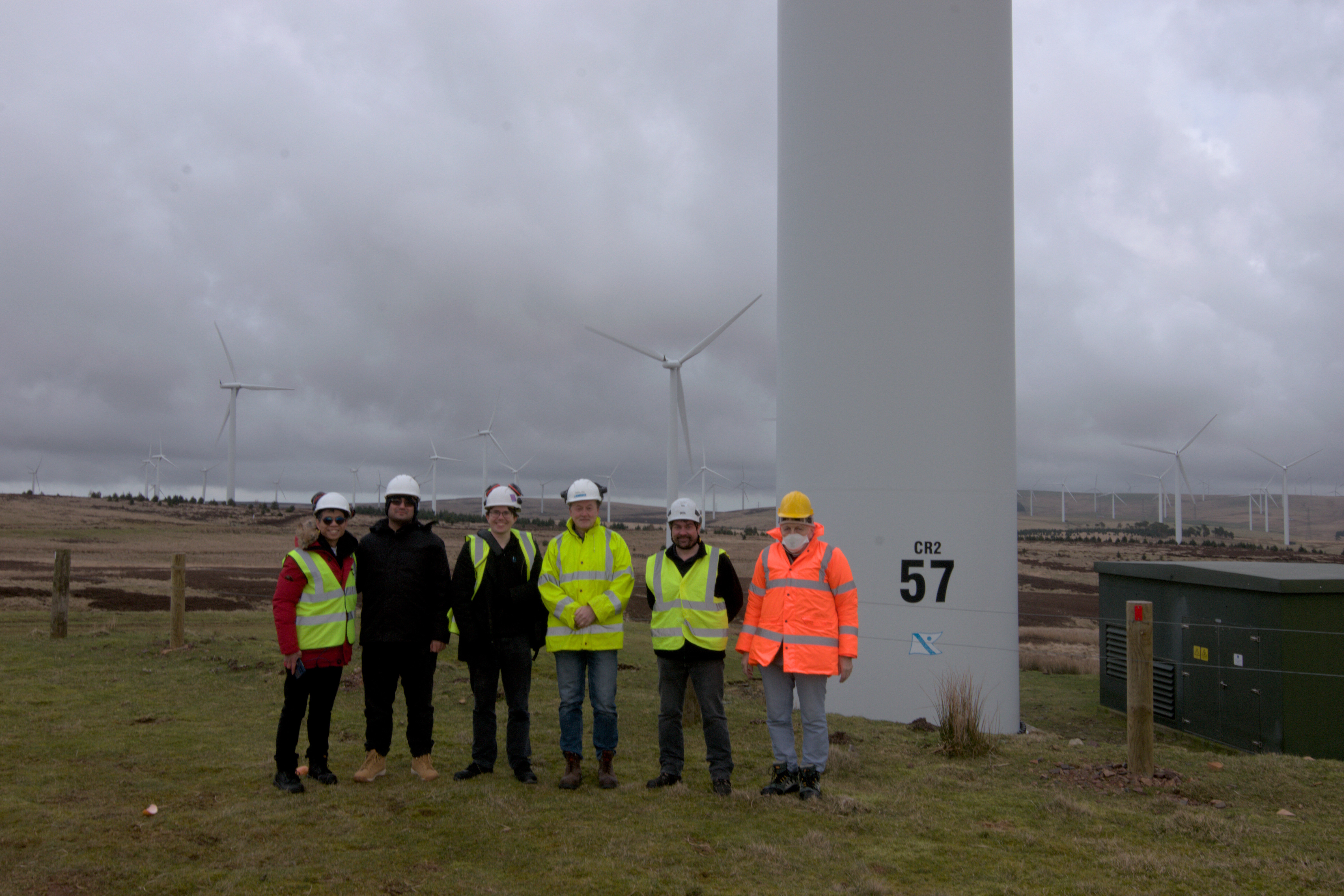MONTURWIND - A Glimpse into the Future of Wind Turbine Maintenance
A collaborative team from Natural Power, the University of Huddersfield and Sensonics recently visited the Crystal Rig II Wind Farm near Dunbar in East Lothian. The wind farm has an installed capacity of 138 MW and is managed by Natural Power, part of the Fred Olsen Group.
This UK government funded project investigating blade health monitoring at the Crystal Rig II Wind Farm holds immense promise for the wind energy industry. By leveraging sensor technology, university expertise, and real-world data collection, this project has the potential to revolutionise how we maintain wind turbines. The purpose of the visit was for the project team to see the 2.3 MW Siemens turbines in action and discuss the monitoring strategy with the site personnel.

L-R, Tak Fu Lau (SEN), Amir Reza Askari (HUD), Dominic Gravina (SEN), Russell King (SEN), Daryl Hickey (NP), Prof Len Gelman (HUD)
T57 at the Crystall Rig II site has been fitted with a range of sensing and data acquisition equipment from Sensonics to develop a database of measured performance data across a range of blade conditions. The objective of the project is to provide operators with live blade health data through the monitoring of the main bearing only, processing data through specialised algorithms developed by the University of Huddersfield combined with machine learning techniques.
Here's what this project could mean for the future:
- Early detection of blade issues: Catching blade deterioration early translates to reduced repair costs and improved turbine uptime. This translates to significant financial benefits for wind farm operators.
- Improved operational efficiency: Real-time blade health data allows for optimised maintenance schedules, minimising downtime and maximising energy production.
- Extended turbine life: Proactive blade maintenance can extend the lifespan of wind turbines, delaying costly replacements and maximising return on investment.
- Non-intrusive monitoring: The focus on non-rotating parts for sensor placement simplifies installation and reduces maintenance complexity.
This project represents a significant step towards a future where wind turbine maintenance is predictive and efficient. By unlocking the power of data and innovative sensor technology, we can ensure these giants of green energy continue to spin cleanly and efficiently for years to come.
The Crystal Rig II project exemplifies the power of collaboration between industry leaders like Natural Power, academic institutions like the University of Huddersfield, and sensor technology specialists like Sensonics. By combining expertise and resources, this project is paving the way for groundbreaking advancements in wind turbine blade health monitoring.



